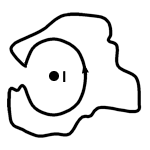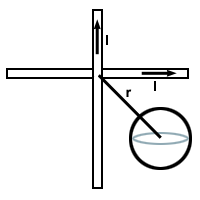Please wait while we process your payment
If you don't see it, please check your spam folder. Sometimes it can end up there.
If you don't see it, please check your spam folder. Sometimes it can end up there.
Please wait while we process your payment

By signing up you agree to our terms and privacy policy.
Don’t have an account? Subscribe now
Create Your Account
Sign up for your FREE 7-day trial
By signing up you agree to our terms and privacy policy.
Already have an account? Log in
Your Email
Choose Your Plan
Individual
Group Discount
Save over 50% with a SparkNotes PLUS Annual Plan!
 payment page
payment page
Purchasing SparkNotes PLUS for a group?
Get Annual Plans at a discount when you buy 2 or more!
Price
$24.99 $18.74 /subscription + tax
Subtotal $37.48 + tax
Save 25% on 2-49 accounts
Save 30% on 50-99 accounts
Want 100 or more? Contact us for a customized plan.
 payment page
payment page
Your Plan
Payment Details
Payment Summary
SparkNotes Plus
You'll be billed after your free trial ends.
7-Day Free Trial
Not Applicable
Renews July 19, 2025 July 12, 2025
Discounts (applied to next billing)
DUE NOW
US $0.00
SNPLUSROCKS20 | 20% Discount
This is not a valid promo code.
Discount Code (one code per order)
SparkNotes PLUS Annual Plan - Group Discount
Qty: 00
SparkNotes Plus subscription is $4.99/month or $24.99/year as selected above. The free trial period is the first 7 days of your subscription. TO CANCEL YOUR SUBSCRIPTION AND AVOID BEING CHARGED, YOU MUST CANCEL BEFORE THE END OF THE FREE TRIAL PERIOD. You may cancel your subscription on your Subscription and Billing page or contact Customer Support at custserv@bn.com. Your subscription will continue automatically once the free trial period is over. Free trial is available to new customers only.
Choose Your Plan
This site is protected by reCAPTCHA and the Google Privacy Policy and Terms of Service apply.
For the next 7 days, you'll have access to awesome PLUS stuff like AP English test prep, No Fear Shakespeare translations and audio, a note-taking tool, personalized dashboard, & much more!
You’ve successfully purchased a group discount. Your group members can use the joining link below to redeem their group membership. You'll also receive an email with the link.
Members will be prompted to log in or create an account to redeem their group membership.
Thanks for creating a SparkNotes account! Continue to start your free trial.
We're sorry, we could not create your account. SparkNotes PLUS is not available in your country. See what countries we’re in.
There was an error creating your account. Please check your payment details and try again.
Please wait while we process your payment

Your PLUS subscription has expired
Please wait while we process your payment
Please wait while we process your payment

Problems 2
Problem :
Calculate the line integral for the magnetic field over the closed loop shown
below:

Notice that the closed loop does not actually enclose the wire. Thus the line integral over this loop must be zero.
Problem :
Using your results from the last problem, show that the line integral over
any closed loop encompassing a current I is equal to  .
.
Though we stated this general fact in the text, we did not prove it. This
exercise completes the proof. Notice from our figure from the last problem that
the closed loop consists of a circle that almost encloses the wire, and a
randomly shaped loop that almost encloses the wire. We thus break up the loop
into two sections. We can approximate the line integral of the first section,
the circle, using what we already know about line integrals of circles around a
wire. The line integral over the circle is thus approximately  . We also know that the line integral of the complete closed loop (both
sections) is zero, implying that the line integral over the second section (the
odd-shaped curve) must be -
. We also know that the line integral of the complete closed loop (both
sections) is zero, implying that the line integral over the second section (the
odd-shaped curve) must be -  . Since the second segment is
oriented in the opposite direction as the right hand rule would dictate for our
wire, the negative sign is attached to the expression. No matter the shape of
that second segment, it will have the same value for its line integral. Thus we
have shown that this property applies to all closed loops, not just circular
ones.
. Since the second segment is
oriented in the opposite direction as the right hand rule would dictate for our
wire, the negative sign is attached to the expression. No matter the shape of
that second segment, it will have the same value for its line integral. Thus we
have shown that this property applies to all closed loops, not just circular
ones.
Problem :
What is the surface integral of the magnetic field through the sphere shown
below?

Though this problem looks quite complex, the property that div B = 0 greatly simplifies our work. Gauss' Law states that
  ·da = ·da =   dv dv |
Please wait while we process your payment

